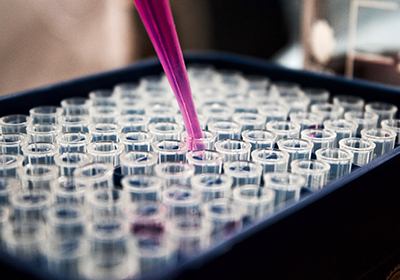Voices of U of U Health
An Unconventional Weapon Against Cancer
Author: Frances McFarland

Science has its rules, but Mother Nature can be quite unconventional. In late January, a group of researchers from Cardiff University, with help from researchers at U of U Health, set the cancer world abuzz when they reported in Nature Immunology that they had discovered an unconventional T cell that kills cancer cells. Unlike conventional T cells, which are highly specific to the antigens they seek to destroy, this unconventional T cell does not discriminate in its targets. The discovery could lead to what some are calling a universal cancer killer. Treatment based on such a killer could complement personalized medicine, with an “off-the-shelf” therapy that works in everyone, regardless of their genetics or the type of cancer they have.
Conventional T cells depend on a molecule called HLA to recognize antigens. HLA presents the antigen to T-cell receptors on the T-cell surface, and the T cell attacks the invader. HLA molecules and the T-cell receptors that recognize them are highly diverse and specific. Thus, our immune system can recognize bacteria, viruses, and many other foreign pathogens.
The Cardiff researchers, led by Professor Andrew Sewell, isolated the unconventional MC.7.G5 T cell from peripheral blood and found that it killed cancer cells. What’s more, it killed multiple types of cancer cells, including blood cancers and solid tumor cells. When the Cardiff researchers tested the T cells in a mouse model of leukemia, they found that mice that received the T cells showed substantially fewer leukemia cells and lived longer than mice that did not. The researchers also found that simply engineering T cells isolated from patients with stage IV melanoma to carry the T-cell receptor from MC.7.G5 redirected them to kill cancer cells. On top of that, MC.7.G5 killed all kinds of cancer cells, but it left noncancerous cells alone, even if those cells were stressed, infected, or damaged.
None of the cancer cells shared a common HLA molecule, but the MC.7.G5 T cell killed them all. If MC.7.G5 did not depend on HLA, then, how did it recognize the cancer cells? Sewell called U of U Health researcher John D. Phillips, Ph.D., to help him find out.
This was not the first time Phillips and Sewell worked together. Their collaboration reached back almost 30 years, when Sewell was a postdoc at U of U Health and Phillips was just starting at the University. Their collaboration has covered a range of scientific questions and even led to a patent on DNA-barcoded beads.
“Andy is a super guy to work with, because it’s not the same thing over and over again,” says Phillips. “We do super cool stuff all the time.”
Now Sewell, Phillips, and U of U Health researcher Colin P. Farrell, MPH, set their sights on the unconventional MC.7.G5 T cell. Phillips suggested that they knock out every protein-coding gene in the human genome to figure out which one of these killer T cells needed to kill the cancer cells. They introduced a CRISPR/Cas9 library into tumor cells and looked for cells that survived the MC.7.G5 onslaught. From there, they isolated DNA from the tumor cells and sequenced and analyzed the genes. This led them to a molecule called MR1, which is expressed on all cells and, unlike HLA, nearly identical in every human being.
“Now you have a T cell that can recognize tumor cells in you, your sister, your cousin, the guy down the street, anybody,” says Phillips. “The molecule that it sees is the same in everybody. And on top of that, it recognizes a lot of different types of cancer cells.” This makes the unconventional MC.7.G5 T cell different from commercially available CAR-T cell therapies, which are highly specific and recognize antigens only on B-cell tumors.
Cardiff University has already entered a partnership with Ervaxx to bring the MC.7.G5 T cells to the clinic. While that is exciting, Phillips is even more excited at the idea of finding out what kind of ligand MR1 presents to the MC.7.G5 T cells, because it is the ligand that allows the unconventional T cell to distinguish cancer cells from normal ones. The researchers know that MC.7.G5 doesn’t recognize the usual MR1-associated molecule, a vitamin B analog. Knowing what the ligand is can provide insight into the cancer-targeting pathway the T cell uses. That can possible help researchers design antigens for cancer-targeted vaccinations or even devise strategies that don’t depend on T cells at all. These avenues could yield more tools in case cancer cells outwit the T cell.
“What’s super exciting is that the ongoing work from this discovery will still be groundbreaking,” Phillips says. “There are so many aspects of this. Andy will figure out what he wants to work on, I’ll figure out what I want to work on, and then we’ll figure out what we want to work on together.”